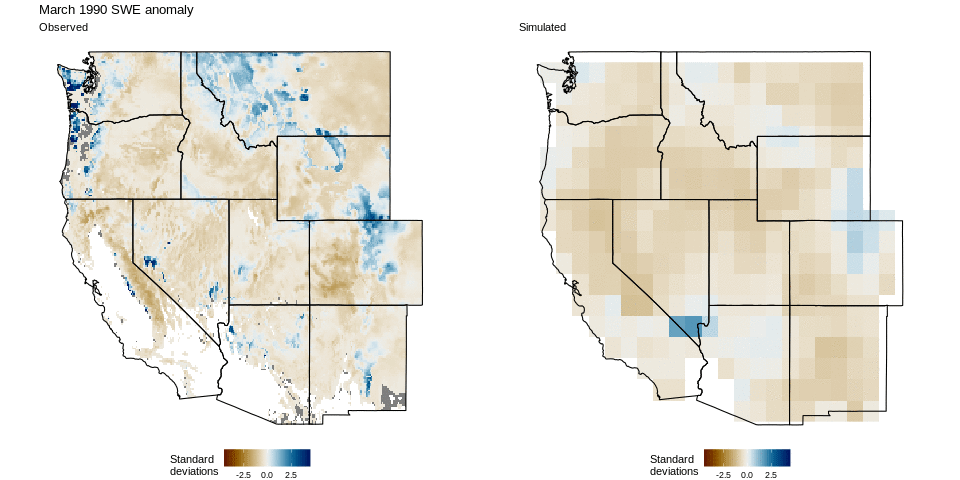
Abstract
The decline in snowpack across the western United States is one of the most immediate threats posed by climate change to regional economies and livelihoods. Climate models are important tools for exploring historical and future snowpack dynamics, yet their relatively coarse spatial resolution can distort local topography and bias spatial patterns of accumulation and ablation. Here, we explore pattern-based statistical downscaling methods for application to simulations of spatially continuous interannual snowpack variability. Coupled pattern-based methods yield accurate, high resolution maps that correct mean and variance biases in domain-wide simulated snowpack. We find that a few leading patterns, present in both observations and reanalyses, capture the majority of snowpack variability across this domain. Methods that use large-scale patterns as both predictors and predictands perform better than those that do not, but we find that all are superior to a local interpolation-based approach. These findings suggest that pattern-based methods are appropriate for downscaling interannual snowpack variability, and that employing physically meaningful large-scale patterns is more important than the details of any particular downscaling method.